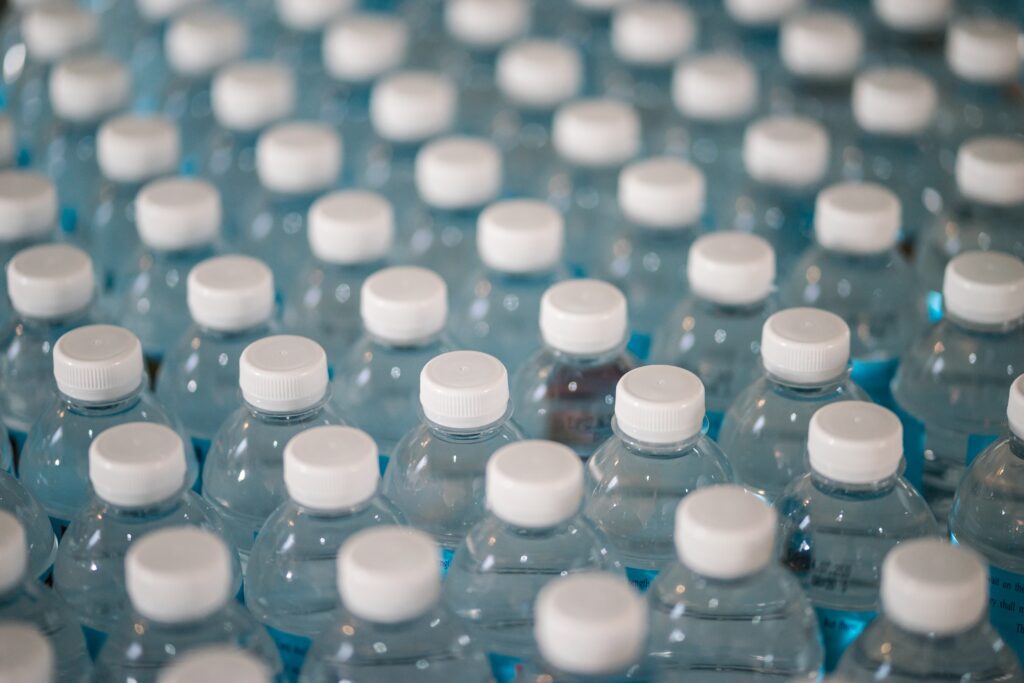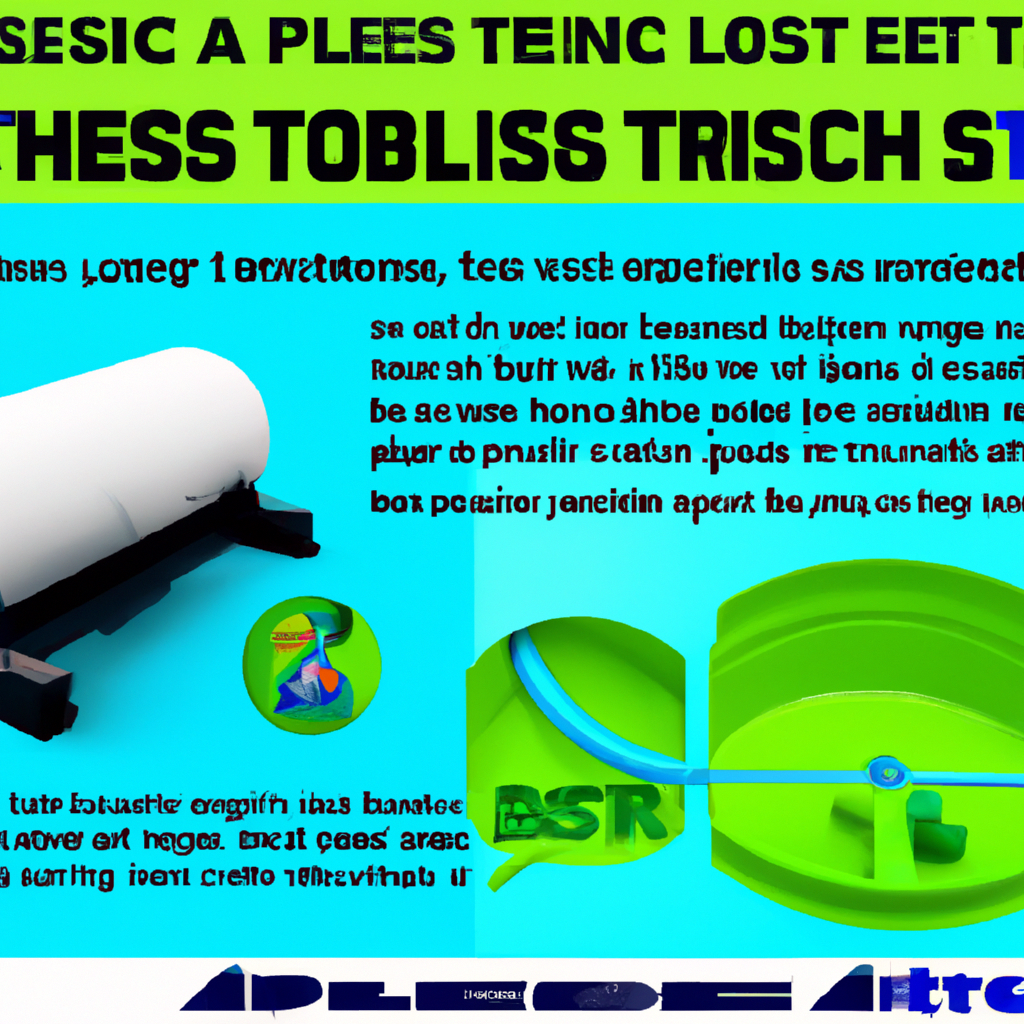Are you considering installing a septic tank on your property? Before making a decision, it’s crucial to understand the benefits of using a plastic septic tank over a concrete one. Plastic septic tanks offer numerous advantages, such as being lightweight, easy to install, and resistant to corrosion. In addition, they are more cost-effective and environmentally friendly compared to their concrete counterparts. By opting for a plastic septic tank, you’ll not only save money and effort but also contribute to a greener future.
Understanding Plastic Septic Tanks
Plastic septic tanks are a type of septic tank that is made from high-quality, durable plastic materials. They are designed to store and treat household wastewater in a safe and efficient manner. These tanks are an essential component of any residential or commercial sewage system, providing a reliable and cost-effective solution for wastewater management.
Definition of Plastic Septic Tanks
Plastic septic tanks are underground containers that hold and treat wastewater from residential or commercial properties. They are made from a variety of plastic materials, such as high-density polyethylene (HDPE) or fiberglass, which are known for their strength and durability. These tanks come in various sizes and shapes to accommodate different properties and usage requirements.
Components of the Plastic Septic Tank
A plastic septic tank consists of several key components that work together to effectively treat wastewater. These components include an inlet pipe, an outlet pipe, a baffle system, and a liquid storage chamber. The inlet pipe allows wastewater to flow into the tank, while the outlet pipe carries treated effluent away from the tank. The baffle system helps to separate solids from liquids, preventing clogs and ensuring proper treatment. The liquid storage chamber holds the treated effluent until it can be safely discharged into the environment.
How a Plastic Septic Tank Works
Plastic septic tanks operate through a natural process called anaerobic digestion, which is a biological decomposition of organic matter without the presence of oxygen. As wastewater enters the tank, solids settle at the bottom, creating a layer of sludge. Bacteria present in the tank break down the organic material in the wastewater, converting it into gases and liquid. The liquid component, known as effluent, rises to the top and flows out of the tank through the outlet pipe. The remaining solids continue to decompose over time, reducing their volume and requiring less frequent pumping.
Economic Benefits of Plastic Septic Tanks
Plastic septic tanks offer several economic benefits compared to concrete septic tanks. These benefits include lower purchase price, reduced installation costs, lower maintenance costs, and savings from longevity.
Lower Purchase Price
Plastic septic tanks are generally more affordable than their concrete counterparts. The materials used in plastic tank manufacturing are readily available and less expensive, resulting in a lower purchase price for consumers. This cost advantage makes plastic septic tanks an attractive option for homeowners or businesses looking to invest in a reliable wastewater management system without breaking the bank.
Reduced Installation Costs
The lightweight nature of plastic septic tanks makes them easier and less expensive to install compared to heavier concrete tanks. The portability of plastic tanks allows for simpler excavation and placement, eliminating the need for heavy machinery or extensive labor. This reduction in installation costs can provide significant savings, especially for larger properties or commercial installations.
Lower Maintenance Costs
Plastic septic tanks typically require less maintenance compared to concrete tanks. The smooth, non-porous surface of plastic materials inhibits the buildup of waste or debris, reducing the risk of blockages or system failures. Additionally, plastic tanks are less prone to cracking or other structural damage, minimizing the need for costly repairs. These lower maintenance requirements translate into long-term cost savings for property owners.
Savings from Longevity
Plastic septic tanks have a longer lifespan compared to concrete tanks. The durable plastic materials used in their construction are resistant to rust, corrosion, and ground movement, ensuring their longevity even in challenging soil or climate conditions. As a result, property owners can enjoy the benefits of a plastic septic tank for many years without incurring the expenses associated with premature tank replacement or extensive repairs.

Longevity and Durability of Plastic Septic Tanks
One of the key advantages of plastic septic tanks is their exceptional longevity and durability. These tanks offer superior resistance to rust and corrosion, withstand ground movement and stress, and have a longer lifespan compared to tanks made from other materials.
Resistance to Rust and Corrosion
Plastic septic tanks are impervious to rust and corrosion, unlike metal tanks that may deteriorate over time. The plastic materials used in their construction do not react with wastewater chemicals or environmental factors, ensuring the structural integrity of the tank for decades. This resistance to rust and corrosion enhances the reliability and longevity of plastic septic tanks, providing peace of mind for property owners.
Resistance to Ground Movement and Stress
Plastic septic tanks are designed to withstand ground movement and stress, making them suitable for installation in various soil conditions. Unlike rigid concrete tanks that may crack or shift under pressure, plastic tanks have a certain degree of flexibility that allows them to adapt to changes in the surrounding environment. This resilience ensures the integrity of the tank, reducing the risk of leaks or other structural failures.
Longer Lifespan Compared to Other Materials
Plastic septic tanks have a longer lifespan compared to tanks made from other materials, such as concrete or metal. The high-quality plastic materials used in their construction, combined with their resistance to rust, corrosion, and ground movement, contribute to their longevity. With proper maintenance and care, a plastic septic tank can last for several decades, providing a reliable and efficient wastewater management solution for property owners.
Environmental Impact of Plastic Septic Tanks
Plastic septic tanks offer several environmental benefits compared to alternative options. These tanks are made from recyclable materials, consume less energy during manufacturing, and have a lower carbon footprint, making them a sustainable choice for wastewater management.
Recyclable Material
Plastic septic tanks are typically made from recyclable materials, such as HDPE or fiberglass. At the end of their lifespan, these tanks can be recycled and transformed into new plastic products, reducing the amount of waste sent to landfills. By choosing a plastic septic tank, property owners contribute to the circular economy and minimize their environmental impact.
Less Energy Consumed in Manufacturing
The manufacturing process of plastic septic tanks consumes less energy compared to other tank materials, such as concrete or metal. Plastic materials require lower temperatures and less energy to mold and shape, resulting in reduced greenhouse gas emissions. This energy efficiency contributes to a smaller carbon footprint and a more sustainable wastewater management solution.
Lower Carbon Footprint
Plastic septic tanks have a lower carbon footprint throughout their lifecycle, from manufacturing to disposal. The energy savings achieved during production, coupled with the recyclability of plastic materials, result in reduced greenhouse gas emissions. By selecting a plastic septic tank, property owners can play an active role in mitigating climate change and promoting environmental stewardship.

Ease of Installation of Plastic Septic Tanks
Plastic septic tanks offer several advantages in terms of installation compared to concrete tanks. These advantages include their light weight and portability, easier excavation and placement, and fewer equipment and labor needs.
Light Weight and Portability
Plastic septic tanks are significantly lighter than concrete tanks, making them easier to handle and transport during the installation process. The lighter weight reduces the need for heavy machinery and simplifies the logistics of installation. Whether it’s a small residential property or a large commercial site, the portability of plastic tanks allows for a smoother and more efficient installation process.
Easier Excavation and Placement
The lightweight nature of plastic septic tanks simplifies the excavation and placement process. Unlike concrete tanks, which require extensive digging and complex maneuvers, plastic tanks can be easily maneuvered into position with minimal effort. This ease of excavation and placement saves time and reduces the overall cost of installation, benefiting both property owners and contractors.
Fewer Equipment and Labor Needs
The installation of plastic septic tanks requires fewer equipment and labor compared to concrete tanks. The lighter weight of plastic tanks eliminates the need for heavy machinery, such as cranes or excavators, reducing equipment rental costs. Additionally, the straightforward installation process of plastic tanks requires fewer skilled laborers, further minimizing labor expenses. These cost-saving factors make plastic septic tanks an economically viable choice for wastewater management systems.
Versatility of Plastic Septic Tanks
Plastic septic tanks offer a high degree of versatility compared to alternative tank materials. They come in a variety of sizes and shapes, allowing for more flexible installations. Additionally, plastic tanks are easier to customize for specific installation requirements and can be used in various soil and climate conditions.
Variety of Sizes and Shapes Available
Plastic septic tanks are available in a wide range of sizes and shapes to accommodate different property sizes and usage demands. Whether it’s a small residential home or a large commercial establishment, there is a plastic septic tank option that can meet specific needs. This variety ensures that property owners can select a tank that suits their requirements and optimizes the performance of their wastewater management system.
Easier Customization for Specific Installations
Plastic septic tanks can be easily customized to fit specific installation requirements. They can be modified to include additional inlet or outlet pipes, depending on the property’s plumbing layout. This flexibility allows for easier integration with existing sewer systems or unique installation setups. Whether it’s adapting to a constrained space or complying with specific regulations, plastic tanks can be tailored to meet individual needs.
Use in Various Soil and Climate Conditions
Plastic septic tanks are suitable for use in various soil and climate conditions. Unlike concrete tanks that may crack or deteriorate under extreme temperatures or soil conditions, plastic tanks offer superior resistance. They can withstand freezing temperatures, high humidity, and harsh soil environments, ensuring their reliable performance regardless of the climate or soil condition.

Maintenance of Plastic Septic Tanks
Maintaining a plastic septic tank is relatively simple compared to other tank materials. These tanks require uncomplicated service and repair, less frequent pumping, and eliminate material-related failures common in other tank options.
Simple Service and Repair
Plastic septic tanks are designed for easy service and repair. The smooth, non-porous surface of plastic materials minimizes the accumulation of waste or debris, reducing the need for frequent cleaning. Additionally, any repairs or replacements can be easily conducted due to the lightweight and portable nature of plastic tanks. These features translate to cost savings and less inconvenience for property owners when it comes to tank maintenance.
Less Frequent Need for Pumping
Plastic septic tanks require less frequent pumping compared to other tank materials. The bacterial action within the tank effectively breaks down organic matter, reducing the volume of solids over time. This reduction in solids accumulation extends the time between pumping intervals, saving property owners both time and money on maintenance.
Absence of Material-Related Failures
Plastic septic tanks eliminate material-related failures commonly associated with other tank options. Unlike concrete tanks that may crack or corrode over time, plastic tanks are resistant to rust, corrosion, and ground movement. This durability ensures the integrity of the tanks, eliminating the risk of leakage or structural failures due to material-related issues.
Comparison with Concrete Septic Tanks
When considering septic tank options, it is important to compare plastic tanks with concrete tanks. Several factors, including cost differences, durability, environmental impact, installation requirements, and maintenance, should be taken into account.
Cost Differences
Plastic septic tanks typically offer cost advantages over concrete tanks. The lower purchase price and reduced installation costs associated with plastic tanks make them a more affordable option. Additionally, the longevity of plastic tanks and lower maintenance requirements result in long-term cost savings compared to concrete tanks.
Durability Comparisons
Both plastic and concrete tanks have their own durability advantages. Plastic tanks excel in their resistance to rust, corrosion, and ground movement. Concrete tanks, however, are known for their strength and stability. While plastic tanks offer longer lifespans, the sturdiness of concrete tanks may be more suitable for high traffic or heavy load areas.
Environmental Impact Comparisons
Plastic septic tanks have a lower environmental impact compared to concrete tanks. The recyclability of plastic materials and reduced energy consumption during manufacturing contribute to a smaller carbon footprint. Concrete tanks, on the other hand, require significant amounts of energy and raw materials during production and may not be recyclable at the end of their lifespan.
Installation Comparisons
Plastic septic tanks offer easier installation compared to concrete tanks. Their lightweight and portable nature simplify excavation and placement, requiring fewer equipment and labor resources. Concrete tanks, while robust, are significantly heavier and may require specialized equipment and expertise for installation.
Maintenance Comparisons
Plastic septic tanks generally require less maintenance compared to concrete tanks. The absence of material-related failures and longer intervals between pumpings contribute to lower maintenance costs for plastic tanks. Concrete tanks may be more prone to cracking or deterioration over time, necessitating more frequent repairs and maintenance.

Safety Factors of Plastic Septic Tanks
Plastic septic tanks offer several safety factors that make them a reliable and secure choice for wastewater management. These tanks reduce the risks of leakage and contamination, are resistant to overfilling damage, and can be safely handled and installed.
Leakage and Contamination Risks
Plastic septic tanks minimize the risks of leakage and contamination. The sturdy construction and resistance to rust and corrosion prevent cracks or fractures that could allow wastewater to escape. This containment ensures that hazardous substances stay within the tank, protecting both the environment and the property owner from potential contamination.
Resistance to Overfilling Damage
Plastic septic tanks are designed to withstand overfilling without sustaining damage. The tanks have built-in capacity markers that indicate the appropriate fill levels, preventing overflow and potential damage to the tank. This feature ensures the safety and longevity of the tank, minimizing the risk of costly repairs or system failures.
Safe Handling and Installation Practices
Plastic septic tanks can be safely handled and installed due to their lightweight and portable nature. The reduced weight makes it easier for contractors to transport and maneuver the tanks during installation. Additionally, plastic tank materials are not as hazardous or toxic as other tank materials, ensuring the safety of the installation process for both workers and the environment.
Drawbacks and Limitations of Plastic Septic Tanks
While plastic septic tanks offer numerous benefits, there are some drawbacks and limitations to be considered. These include the potential for warping over time, the risk of damage from heavy weights, and regulatory barriers in certain areas.
Potential Warping over Time
Plastic septic tanks have the potential to warp over time, especially when exposed to extreme temperatures or challenging soil conditions. This warping can affect the structural stability of the tank and may require repair or replacement. Property owners should consider their specific climate and soil conditions when deciding on the most suitable tank material.
Risk of Damage from Heavy Weights
Plastic septic tanks may be susceptible to damage from heavy weights or vehicles parked above them. While plastic tanks are designed to withstand ground pressure and stress, excessive weight can still cause deformation or structural damage. Property owners should ensure proper placement and avoid subjecting the tank to unnecessary stress or loads.
Regulatory Barriers in Some Areas
In certain areas, there may be regulatory barriers or restrictions on the use of plastic septic tanks. Local building codes or environmental regulations might require specific tank materials, designs, or certifications that are not easily met by plastic tanks. Property owners should consult with local authorities or experts to ensure compliance with any applicable regulations before choosing a tank material.
In conclusion, plastic septic tanks offer numerous benefits for property owners in terms of economics, longevity, environmental impact, installation, maintenance, and safety. Their lower purchase price, reduced installation costs, and lower maintenance requirements make them an economically viable option. The durability and resistance of plastic tanks ensure a longer lifespan and minimize material-related failures. They also have a lower environmental impact through recyclable materials, energy efficiency, and reduced carbon footprint. The ease of installation, versatility, and simpler maintenance make plastic tanks a practical choice for various installations and soil conditions. When compared to concrete tanks, plastic tanks excel in several aspects, including cost, environmental impact, and installation requirements. They also provide greater safety by reducing leakage and contamination risks, resisting overfilling damage, and offering safe handling and installation practices. However, it is important to consider potential drawbacks and limitations such as the risk of warping over time, susceptibility to damage from heavy weights, and regulatory barriers in certain areas. By carefully evaluating these factors, property owners can make an informed decision and enjoy the many benefits of using a plastic septic tank for their wastewater management needs.

